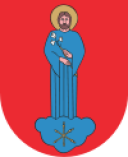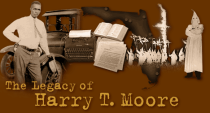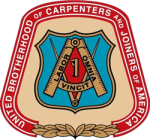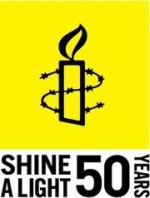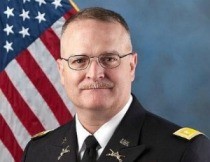Einsatzgruppen
Einsatzgruppen (Mobile Killing Units) USHMM
(Mobile Killing Units)
Holocaust Encyclopedia
United States Holocaust Memorial Museum
Einsatzgruppen (in this context, mobile killing units) were squads composed primarily of German SS and police personnel. Under the command of the German Security Police (Sicherheitspolizei; Sipo) and Security Service (Sicherheitsdienst; SD) officers, the Einsatzgruppen had among their tasks the murder of those perceived to be racial or political enemies found behind German combat lines in the occupied Soviet Union.
These victims included Jews, Roma (Gypsies), and officials of the Soviet state and the Soviet Communist party. The Einsatzgruppen also murdered thousands of residents of institutions for the mentally and physically disabled. Many scholars believe that the systematic killing of Jews in the occupied Soviet Union by Einsatzgruppen and Order Police (Ordnungspolizei) battalions was the first step of the "Final Solution," the Nazi program to murder all European Jews.
During the invasion of the Soviet Union in June 1941, the Einsatzgruppen followed the German army as it advanced deep into Soviet territory. The Einsatzgruppen, often drawing on local civilian and police support, carried out mass-murder operations. In contrast to the methods later instituted of deporting Jews from their own towns and cities or from ghetto settings to killing centers, Einsatzgruppen came directly to the home communities of Jews and massacred them.
The German army provided logistical support to the Einsatzgruppen, including supplies, transportation, housing, and occasionally manpower in the form of units to guard and transport prisoners. At first the Einsatzgruppen shot primarily Jewish men. By late summer 1941, however, wherever the Einsatzgruppen went, they shot Jewish men, women, and children without regard for age or sex, and buried them in mass graves. Often with the help of local informants and interpreters, Jews in a given locality were identified and taken to collection points. Thereafter they were marched or transported by truck to the execution site, where trenches had been prepared. In some cases the captive victims had to dig their own graves. After the victims had handed over their valuables and undressed, men, women, and children were shot, either standing before the open trench, or lying face down in the prepared pit.
Shooting was the most common form of killing used by the Einsatzgruppen. Yet in the late summer of 1941, Heinrich Himmler, noting the psychological burden that mass shootings produced on his men, requested that a more convenient mode of killing be developed. The result was the gas van, a mobile gas chamber surmounted on the chassis of a cargo truck which employed carbon monoxide from the truck's exhaust to kill its victims. Gas vans made their first appearance on the eastern front in late fall 1941, and were eventually utilized, along with shooting, to murder Jews and other victims in most areas where the Einsatzgruppen operated.
Read more USHMM
Einsatzgruppen The Death Brigades
by The National Center For Jewish Film
Before the extermination camps even started operation, the Nazis were already shooting hundreds of thousands of men, women and children all over Eastern Europe.
Einsatzgruppen, Wikipedia
Overlooked Millions: Non-Jewish Victims of the Holocaust
Karen Silverstrim, MA Candidate, University of Central Arkansas
An Introduction to the Einsatzgruppen an essay by Yale F. Edeiken
Jewish Virtual Library, The Holocaust: The Einsatzgruppen
Holocaust Education & Archive Research Team Einsatzgruppen
- Reserve Police Battalion 101 Wikipedia
- Reserve Police Battalion 101 JewishVirtualLibrary.org
- The Men Who Pulled the Triggers NYT by Walter Reich
The Men Who Pulled the Triggers
The New York Times
By Walter Reich;
Published: April 12, 1992
ORDINARY MEN Reserve Police Battalion 101 and the Final Solution in Poland. By Christopher R. Browning. Illustrated. 231 pp. New York: Aaron Asher Books/HarperCollins Publishers. $22.
We know a lot about how the Germans carried out the Holocaust. We know much less about how they felt and what they thought as they did it, how they were affected by what they did, and what made it possible for them to do it. In fact, we know remarkably little about the ordinary Germans who made the Holocaust happen -- not the desk murderers in Berlin, not the Eichmanns and Heydrichs, and not Hitler and Himmler, but the tens of thousands of conscripted soldiers and policemen from all walks of life, many of them middle-aged, who rounded up millions of Jews and methodically shot them, one by one, in forests, ravines and ditches, or stuffed them, one by one, into cattle cars and guarded those cars on their way to the gas chambers.
In his finely focused and stunningly powerful book, "Ordinary Men: Reserve Police Battalion 101 and the Final Solution in Poland," Christopher R. Browning tells us about such Germans and helps us understand, better than we did before, not only what they did to make the Holocaust happen but also how they were transformed psychologically from the ordinary men of his title into active participants in the most monstrous crime in human history. In doing so he aims a penetrating searchlight on the human capacity for utmost evil and leaves us staring at his subject matter with the shock of knowledge and the lurking fear of self-recognition.
The Men Who Pulled the Triggers - The Ne[...]
Adobe Acrobat document [65.5 KB]
 A boy stands beside his murdered family before his own death by the SS. Zboriv, Ukraine, 5 July 1941
A boy stands beside his murdered family before his own death by the SS. Zboriv, Ukraine, 5 July 1941
Einsatzgruppen
Wikipedia
Einsatzgruppen (German for "task forces",[1] "deployment groups";[2] singular Einsatzgruppe; official full name Einsatzgruppen der Sicherheitspolizei und des SD) were Schutzstaffel (SS) paramilitary death squads of Nazi Germany that were responsible for mass killings, primarily by shooting, during World War II. The Einsatzgruppen were involved in the murder of much of the intelligentsia and cultural elite of Poland, and had an integral role in the implementation of the Final Solution of the Jewish question (Die Endlösung der Judenfrage) in territories conquered by Nazi Germany. Almost all of the people they killed were civilians, beginning with the intelligentsia and swiftly progressing to Soviet political commissars, Jews, and Gypsies throughout Eastern Europe.
Under the direction of Reichsführer-SS Heinrich Himmler and the supervision of SS-Obergruppenführer Reinhard Heydrich, the Einsatzgruppen operated in territories occupied by the German armed forces following the invasion of Poland in September 1939 and Operation Barbarossa (the invasion of the Soviet Union) in June 1941. The Einsatzgruppen worked hand-in-hand with the Orpo Police Battalions on the Eastern Front to carry out operations ranging from the murder of a few people to operations which lasted over two or more days, such as the massacre at Babi Yar with 33,771 Jews killed in two days, and the Rumbula massacre (with about 25,000 killed in two days of shooting). As ordered by Nazi leader Adolf Hitler, the Wehrmacht cooperated with the Einsatzgruppen and provided logistical support for their operations. Historian Raul Hilberg estimates that between 1941 and 1945 the Einsatzgruppen and related auxiliary troops killed more than two million people, including 1.3 million Jews. The total number of Jews murdered during the Holocaust is estimated at 5.5 to 6 million people.
After the close of World War II, 24 senior leaders of the Einsatzgruppen were prosecuted in the Einsatzgruppen Trial in 1947–48, charged with crimes against humanity and war crimes. Fourteen death sentences and two life sentences were handed out. Four additional Einsatzgruppe leaders were later tried and executed by other nations. Read more
From The Einsatzgrubben website
Not all murdered Jews were killed in the camps. A mobile killing force called the Einsatzgrubben conducted many executions, particularly in the Ukraine and Baltic states.
Killing of Jews at Ivanhorod, Ukraine, 1942. A woman is attempting to protect a child with her own body just before they are fired on with rifles at close range. Einsatzgruppen Wikipedia
Józefów Massacre
Wikipedia
Before the massacre, Józefów was a typical, relatively large village in Eastern Poland located twenty miles southeast of Bilgoraj.[2] It had a large Jewish population numbering around 2,000 individuals or 60 percent of the total population.[3] The substantial Jewish sector originated with the founding of the town in the early 18th century. Traditionally, the town was fairly poor and provincial with a large population of orthodox Jews.
During the 1939 invasions of Poland by Germany and the Soviet Union, Józefów was bombed by the German Luftwaffe, and subsequently occupied by first the German and then the Red Army for a few days. The Soviet occupation was short-lived, however as many as 1,000 Jews left the town during this time, mostly those with the means and relations to relocate to other areas, especially the Soviet Union.[3] The area became part of the Nazi's General Government, and those remaining in Józefów continued living relatively normal lives, governed by the Jewish Committee or Judenrat. In 1941, an influx of 1,100 poor Jews were relocated to Józefów from Konin. As a result, conditions in the already struggling town deteriorated. There was not enough food or housing for the growing Jewish population and the Nazi presence became harder to ignore. There were also growing health concerns as Józefów become a hot spot for the typhus epidemic in Bilgoraj County in 1941 and 1942.[3] There were no doctors remaining in the town to tend to the sick and deaths from typhus were common.
The Józefów Massacre was carried about by the men of Nazi German Reserve Police Battalion 101, led by Major Wilhelm Trapp ("Pappa Trapp"). The battalion had eleven officers, five administrators and 486 men. The servicemen of Police Battalion 101 were not dedicated Nazis, but ordinary Germans from Hamburg and the surrounding region. They were primarily Evangelical Protestants and most were older men with wives and families of their own.[4] The average age in the battalion was thirty-nine, meaning most had grown up and experienced life before the rise of Hitler and Nazism.[5] These men were also mostly from the working class, dock workers and truck drivers, but some were lower-middle class or skilled laborers. Few had been educated beyond the age of fifteen. The fact that these men were only police battalion members, and had not volunteered for the SS or Gestapo duty indicates that they were not particularly strong advocates of Nazism. By 1942 only 25% were members of the Nazi Party.[5]
On July 12, the day before the massacre was to take place, Major Trapp relayed the orders to the officers. A reserve Lieutenant in the 1st Company declared himself unfit for the task. Instead, he was reassigned to transport Jews to work in Lublin.[6] Sometime between the hours of midnight and 2 a.m., the battalion left for Józefów.[7] When they arrived, Major Trapp delivered the order calling for the mass extermination of the village’s Jews. One witness recalled,
He announced that in the locality before us we were to carry out a mass killing by shooting and he brought out clearly that those whom we were supposed to shoot were Jews. During his address he bid us to think of our women and children in our homeland who had to endure aerial bombardments. In particular, we were supposed to bear in mind that many women and children lose their lives in these attacks. Thinking of these facts would make it easier for us to carry out the order during the upcoming [killing] action. Major Trapp remarked that the action was entirely not in his spirit, but that he had received this order from higher authority.[8]
It is unclear whether referencing German women and children was meant to encourage or deter the men from fulfilling their duties. Regardless, Trapp then requested that any man who did not feel up to the task should step forward. Between ten and twelve men opted out and were reassigned to guard or transport duties.[8]
First, the Jews were driven out of their homes and rounded up in the market place. Any Jew who resisted, hid, or was unable to make it to the market was ordered to be shot on the spot.[9] Around 10 a.m, all the young men who were deemed fit to work were separated and the group (about 400) was sent to work in Lublin.[8] During part of the selection process, the 1st Company gathered in a semi-circle around Dr. Schoenfelder where the battalion's physician proceeded to instruct the men to shoot their victims in the back of the neck. Then the remaining Jews were loaded into trucks and driven to the nearby forest. Each member of the firing squad was paired with a Jewish man, woman, or child. Together, members of the 1st Company and Jews marched into a clearing and executions were carried out after a squad leader issued the order. By noon, the 1st Company was joined by the 2nd Company[10] and by the end of the day they had murdered between 1,200 and 1,500 Jews.[11] The battalion left the corpses in the forest and the responsibility for their burial fell to the mayor of Józefów.[10] Read more








